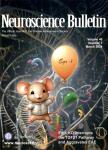Non-human Primate Models for Brain Disorders – Towards Genetic Manipulations via Innovative Technology
Non-human Primate Models for Brain Disorders – Towards Genetic Manipulations via Innovative Technology作者机构:Institute of Neuroscience Key Laboratory of Primate Neurobiology State Key Laboratory of Neuroscience Center for Excellence in Brain Science and Intelligence TechnologyShanghai Institute for Biological Sciences Chinese Academy of Sciences
出 版 物:《Neuroscience Bulletin》 (神经科学通报(英文版))
年 卷 期:2017年第33卷第2期
页 面:247-250页
核心收录:
学科分类:0710[理学-生物学] 1002[医学-临床医学] 1001[医学-基础医学(可授医学、理学学位)] 100204[医学-神经病学] 10[医学]
基 金:supported by the Chinese Academy of Sciences Strategic Priority Research Program (XDB02050400) the National Natural Science Foundation of China (91432111)
主 题:Non human primates Brain disorders Genome editing Autism Neurological disorders Psychiatric disorders
摘 要:Modeling brain disorders has always been one of the key tasks in neurobiological studies. A wide range of organisms including worms, fruit ?ies, zebra?sh, and rodents have been used for modeling brain disorders. However,whether complicated neurological and psychiatric symptoms can be faithfully mimicked in animals is still debatable.In this review, we discuss key ?ndings using non-human primates to address the neural mechanisms underlying stress and anxiety behaviors, as well as technical advances for establishing genetically-engineered non-human primate models of autism spectrum disorders and other disorders.Considering the close evolutionary connections and similarity of brain structures between non-human primates and humans, together with the rapid progress in genome-editing technology, non-human primates will be indispensable for pathophysiological studies and exploring potential therapeutic methods for treating brain disorders.



